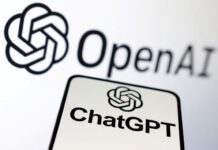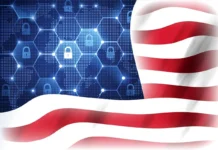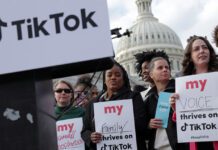ICANN CEO Fadi Chehade
(Credit:
ICANN)
Starting next week, the Internet is going to look very different — and ICANN Chief Executive Fadi Chehade is the one who’ll get both the credit and the blame.
Today, Net addresses end with 22 familiar terms — .com, .net, and .edu — called generic top-level domains (GTLDs). But starting Feb. 4, the first of hundreds of new GTLDs will begin arriving — .ninja, .farm, .shoes, .photography, .bike, .pink, and even .wtf.
The Internet Corporation for Assigned Names and Numbers (ICANN), a non-profit organization, oversees the domain-name expansion and the core Internet technology called the Domain Name System that makes it tick. Chehade took over ICANN leadership in 2012 and now is grappling not just with the GTLD expansion, but also the dwindling supply of numeric Internet addresses and an attempt to wean the Internet from the US government’s dominant oversight role.
Why bother with the domain-name expansion? For a company trying to get a new start on the Net, finding an unclaimed Web address can be tough. And for a company catering to customers in countries like China or Russia, names are held back with characters in the Roman alphabet. Other companies might want to use their own domain — actual examples including .google, .canon, .apple, .samsung, and .ibm.
That’s pleased those who see a business reason to embrace the new addresses. “Since Fadi has taken the helm at ICANN, the program has moved forward at a much faster pace,” said Shayan Rostam, production manager at XYZ.com, which will operate registries for .xyz and .college. “We have pushed up our global .xyz launch date to this March, directly due to Fadi’s leadership of the program.”
The reason Chehade is also in the hot seat, though, is fielding criticisms from those with a trademark to protect. For them, the explosion of new GTLDs means new hassles and expenses.
ICANN established a Trademark Clearinghouse where organizations can register their brand names and get alerts if somebody else wants to use them in some way. But even with that, organizations still must decide whether to apply for the right to operate a registry with their name, to contest or bid against others’ domain-name choices, and to register Net addresses on the hundreds of new domains others will operate — ibm.xyz, for example. (Although the first round of applications to run generic top-level domains is closed, companies still must decide what to do with approved new domains and what to do when they can apply again.)
Chehade, 50, brings an international viewpoint to the job of running the Internet. He’s a citizen of Egypt, Lebanon, and the United States who speaks Arabic, English, French, and Italian. He founded three technology companies and more recently served as CEO of two others Vocado and CoreObjects Software. The following is an edited transcript of his conversation with CNET News’ Stephen Shankland.
Stephen Shankland: We’re at a very important juncture where ICANN is about to launch the first generic top-level domains. When do the first new ones come on line?
Fadi Chehade: In February you’ll see them. You can go to some of the large registrars like GoDaddy and preregister for many of them. We’re excited. The champagne is ready.
Eight years in the making is a long time for anything, especially when you’re not manufacturing anything, but just to getting everybody to agree. We just delegated a bunch in the last few days — .democrat, .florist, .repair, and so forth.
By the end of the year we’ll have hundreds of new domains. What’s the benefit of opening this up so widely?
At ICANN we came to the conclusion that the 22 current GTLDs were crowded and it was time to give more variety and more choice and more competition.
As an entrepreneur, I am a great believer that as you expand technology and give new horizons to people, you can’t even imagine what people will come up with — but I’m certain the market will discover them.
The Domain Name System [will allow domains] not only in Latin letters but in Chinese letters and Cyrillic letters and Arabic letters. You can talk to the mayor of New York. He has big ideas for .nyc. The mayor of Rio [de Janeiro] called me about all their plans for .rio. I belong to a minority community — the Coptic Orthodox Christian community. I know that minorities will find places on the Net to express themselves through Domain Name System spaces.
I’ve heard a lot of pushback from trademarks owners who worry how they’re going to protect their trademarks across hundreds of thousands of new domains. Are they going to have register coca-cola.xyz, coca-cola.sucks, coca-cola.anything?
I come from the business sector. I’m extremely personally sensitive to the cries of concern you’re hearing and I’m hearing. Having said that, the intellectual property community has been extremely active in a very good way in ICANN. They have been able, through their good participation in the multistakeholder model, to guide us in the establishment of some things that have never been done. We now have the first global trademark clearinghouse, where people can register and protect their trademarks. We are protecting things far more now in the GTLD program than they are protected in the current top-level domains and far more than they are in the physical world now. And we provide all kinds of mechanisms for people to lodge complaints and to give domain names back to them if they are the rightful owners.
When I first came on board, I wanted to give the trademark IP [intellectual property] holders a second chance to express their concerns. We made some adjustments to the program to go the extra mile to ensure their concerns are heard.
On the practical side, do I need to register my name under every domain all over the world? I think the fears of massive defensive registration are unwarranted. I encourage companies that have IP to protect in the Domain Name System to instead engage in what I call a wise and balanced approach understanding how to assess these things in a structured way rather than a protect everything, everywhere, all the time.
I understand that there are a lot of mechanisms to handle the problem gracefully. But this isn’t a problem people had to handle before, and now they do. It’s still extra work for a lot of trademark holders.
No question. I’m a businessman who understands the two sides of the coin. A gentleman from one of the major brands cornered me at an ICANN meeting and said this is work that didn’t have to be done that we now have to do. I said, “I understand, what are your plans to use your brand name, to create new virtual spaces where you can sell services, products, and content?” He looked at me like I was from outer space. Some of companies move more from risk mitigation, but I know at least two dozen companies planning some very interesting things to actually build their brand on the Web. Making the investment to protecting their name in the vast domain name system pales in comparison to the opportunity.
ICANN charges $185,000 for an organization to apply to run a generic top-level domain, and then there are further annual fees on top. Will costs come down as we get hundreds, thousands, or even tens of thousands of GTLDs?
From my business sense I’d be extremely surprised if the costs don’t go down in the next round. The fee we charged, $185,000, turned out to be just what we needed to get that program built — not too high, not too low. We’re fully transparent. We showed how we spent every penny.
At the end of the day, I’m not a business. We are a nonprofit offering services in the interest of the public. Under my administration, we’ll make a major effort to ensure people around the world know about the GTLD program and have easier access to participate.
I’ve seen examples like the Japanese camera maker Canon applying to run a registry for .canon Net addresses. Do you hope that all companies with trademarks will run their own generic top-level domains?
We a huge pent-up demand to reopen the program. It’s coming quite a bit from the brand side. Many, many brands and many, many communities didn’t know about the GTLD program. I get significant amounts of questions about when can we open the next round, because certainly there is a bit of angst that if Canon uses this to do an incredible mass customization campaign to win users to their product, I’m sure the brand next to them will say “Why aren’t we doing this?” So I do believe this will snowball. But many will find a .com or whatever they have now will be good enough, and I believe that one excludes the other.
What exactly is the nature of your contract with the US Department of Commerce? I don’t think a lot of people know.
It’s a zero-dollar contract: there’s no money that passes between us and the Department of Commerce. The origins of ICANN started when the US government left this function of updating the root of the Internet Domain Name System. Three things are covered by this contract: the Domain Name System, which are the names; the numbers, which are the IP numbers [Internet Protocol numbers are used to route data across the Net from one machine to another]; and the protocol parameters. That’s the extent of our relationship with the US government, other than the US government, like any other government, being a member of ICANN’s governmental advisory committee.
This contract continues to maintain the US government’s stewardship over these three areas that we do. The US government role is to ensure that we are doing these functions as the community has asked us to do them. The US government is essentially in an oversight role over ICANN. The US government as well as the contract itself has always defined that at some point that stewardship will be replaced by the multistakeholder stewardship of the ICANN community. This was always envisaged as coming, but the question was when and how.
I have in the last few months publicly stated that the time for that has come. This oversight is not sustainable any longer, and therefore we should work with the US to hand over its superb stewardship. We should all be thankful for the stewardship of the US government. It’s worked marvelously well. Now it is important for the US government to appreciate it’s time to have that stewardship headed to the world community through the ICANN’s multistakeholder model.
What influence have the Snowden revelations had on your agenda and the timeline you’re pursuing it on?
We’ve been waiting for the right moment to get there. The right moment is now, evidenced by the progress at ICANN in the last two years, and before that under Rod Beckstrom, my predecessor. ICANN has become a more mature organization — not just in its number of staff, but also in its global accountability and its presence around the world. President [Toomas Hendrik] Ilves of Estonia announced at the World Economic Forum that the ICANN multistakeholder regime is probably the most advanced in the world. These are statements that three or four years ago were not heard. Therefore it is important to appreciate the US government now sees this moment is upon us.
The question is how and when? We do calmly, we do it wisely, with all the community involved, so the community can guide us. These discussions I need to start with our colleagues in the US government, and I will, but I first wanted to ensure we were aligned as a community.
Clearly, there is no question that Edward Snowden’s revelations have stimulated the dialog. I attended a couple sessions at the World Economic Forum about security risks. I saw leader after of leader of major companies like GE sincerely worried about the trust factor on the Internet. And we have the Target situation. The trust in the ecosystem has been punctured a little bit.
I’m not naive. I don’t believe we should all hug each other and trust each other. The reality is that trust can only be restored through checks and balances. Checks and balances mean you do not have a single actor or institution that owns the responsibility in any one part of the Internet governance ecosystem. What you want instead is to create governance networks — a term I’m pushing. Not governance institutions, not governance regulations. What we need in the age of the Internet is governance networks. These are networks that are formed by multiple stakeholders to solve governance characteristics. They must have three characteristics: they must be effective, they must be dynamic, and they must be legitimate. These are very complex characteristics. We need to evolve the US oversight into something that the world will embrace but also to not replace it with something that will be either one actor or one type of actor — for example, all governments — but target a governance network that includes all the stakeholders.
How does that tie in with the power grab at the United Nations’ International Telecommunications Union (ITU)’s power grab?
They want to address some issues that are not being addressed well through the tech sector or many governments around the world. They picked on things like spam and cybersecurity and said, “We could help there.” Where ICANN and the IETF play is the layer of governance of what makes up the Internet — the logical layer. Where the discussion is open is how do we govern what is on the Internet.
Rather than continuing to say not here, and continuing this polarized fight between the multistakeholder and multilateral model, I went to Brazil and met with President [Dilma] Rousseff and asked her, why don’t we address all these issues on all sides. We need a more nuanced approach that ensures we have a home to start addressing what is on the Internet, and at the same time to evolve the current governance networks like ICANN so they also are more legitimate, accepted by the whole world, and more effective at things like addressing US oversight.
So you’re proposing what sort of organization to oversee what’s on the Internet?
It is not an organization. What we’re going to do at a meeting on April 23 in Sao Paulo is propose an interconnected governance ecosystem. We’re creating a highly distributed but also structured way to address the issues by establishing new governance networks. We’ll make sure these are well coordinated at the global, regional, and national levels. It’s like a 21st century governance system for the Internet. Hopefully at Brazil we’ll see the birth of something that evolves what we have today but also allows it to expand.
I’m a US-UK citizen who lives in France. You’re a citizen of Lebanon, Egypt, and the US. We both live what some people are calling a post-national existence. Will the Internet ultimately make national borders look obsolete?
As measured in centuries, yes. The Internet operates in a transnational space. It is challenging our laws, our jurisdictions. It is challenging world to create more international frameworks for legal and cultural matters.
Today, we get certain rights and certain guarantees, but it is the nation-state model that provides them. But the Internet is humbling the nation-state model. It is stressing it and creating new challenges that didn’t exist before. I tell leaders they have two choices. They can build walls and create friction between their own Internet and the rest of the world, or they can engage in the world and participate in these networks.
A Boston Consulting Group study introduced the idea of the e-friction index. It shows you that for a government that resorts to building friction that allow it to protect who it is, there is a cost to that. The study concludes there are up to 2.5 percentage points of GDP [gross domestic product, a measure a country’s total economic activity] that are potentially lost. A frictionless Internet should be our goal.
Are you worried about that countries will wall off their own Internet services into their own “splinternets”?
I’m really worried, because people do not understand the impact of a high-friction Internet. If they will resort to nationalization of their Internet ecosystem, the cost of that will be tremendous, not just economically, but socially. I talked to a professor who put online a senior college course in advanced mathematics. About 36,000 students used it, and the top students are in the age group of 14-15 years old. Imagine all these knowledge lines fractured by policy friction and content friction.
The danger is there. Some people predicting it is inevitable. If we thoughtfully move to new governance networks to address the issues, we may have a chance this year to start a less alarming path to solving that problem today.








